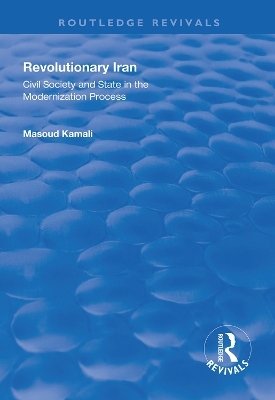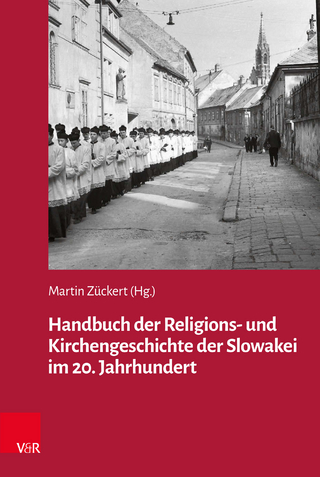
Revolutionary Iran
Civil Society and State in the Modernization Process
Seiten
2018
Routledge (Verlag)
978-1-138-33090-0 (ISBN)
Routledge (Verlag)
978-1-138-33090-0 (ISBN)
First published in 1998, Revolutionary Iran investigates two major political transformations in the modern history of Iran: the Constitutional Revolution of 1905-09 and the Islamic Revolution of 1976-79 and their relation to the modernization of Iran in this century.
First published in 1998, Revolutionary Iran investigates two major political transformations in the modern history of Iran: the Constitutional Revolution of 1905-09 and the Islamic Revolution 1976-79 and their relation to the modernization of Iran in this century. It addresses a core question: Why did the clergy not take political power in the Constitutional Revolution when Iran was a traditional society and they played a key leadership role in the revolution; yet they succeeded in the more modern Iran of 1979.
Characterization of socio-economic relationships between the two major influential groups of civil society in Iran and their role in political transformation is considered central for answering such a question. The book deals with revolution in terms of relationships between civil society and state; which, it is argued, are central to analysing and understanding modern movements in Iran and other Islamic countries. The major contribution of the book can be summarized as follows:
It identifies a socio-political division of power and influence between state and civil society during a long period of Iran’s Islamic history as the key theoretical basis for understanding modern transformations of Iranian society. Such a division has, so far, been largely ignored.
It explores the clergy and bazaris as the social basis of civil society in Iran, and challenges Gellner’s viewpoint that an Islamic civil society is an impossibility.
It argues that the modernization of religion and the creation of modern political theories by the clergy were both crucial means for defeating a modern authoritarian state and seizing political power.
It identifies the main social group without whom the Islamic Revolution of Iran would not have achieved political victory, i.e., the dispossessed.
It presents a theoretical basis for analysing and understanding new Islamic movements in the Islamic world.
First published in 1998, Revolutionary Iran investigates two major political transformations in the modern history of Iran: the Constitutional Revolution of 1905-09 and the Islamic Revolution 1976-79 and their relation to the modernization of Iran in this century. It addresses a core question: Why did the clergy not take political power in the Constitutional Revolution when Iran was a traditional society and they played a key leadership role in the revolution; yet they succeeded in the more modern Iran of 1979.
Characterization of socio-economic relationships between the two major influential groups of civil society in Iran and their role in political transformation is considered central for answering such a question. The book deals with revolution in terms of relationships between civil society and state; which, it is argued, are central to analysing and understanding modern movements in Iran and other Islamic countries. The major contribution of the book can be summarized as follows:
It identifies a socio-political division of power and influence between state and civil society during a long period of Iran’s Islamic history as the key theoretical basis for understanding modern transformations of Iranian society. Such a division has, so far, been largely ignored.
It explores the clergy and bazaris as the social basis of civil society in Iran, and challenges Gellner’s viewpoint that an Islamic civil society is an impossibility.
It argues that the modernization of religion and the creation of modern political theories by the clergy were both crucial means for defeating a modern authoritarian state and seizing political power.
It identifies the main social group without whom the Islamic Revolution of Iran would not have achieved political victory, i.e., the dispossessed.
It presents a theoretical basis for analysing and understanding new Islamic movements in the Islamic world.
Masoud Kamali
Part 1. Civil Society in Iran, Foreign Impact, and the Constitutional Revolution. 1. The Construction of the Muslim Society of Iran. 2. Civil Society in Iran. 3. Iran on the Eve of the Constitutional Revolution. 4. The Constitutional Revolution. 5. The Constitutionalism of the Ulama. Part 2. The New Monarchical Regime, Modernization, and the Islamic Revolution. 6. Iran Under the Pahlavis. 7. Modernization and the Ulama. 8. Iran on the Eve of the Islamic Revolution. 9. The Islamic Revolution. Part 3. Discussion and Conclusions. 10. The Two Revolutions: Comparative Reflections. 11. Conceptual Reflections: Islamic Civil Society, Modernization, Revolution.
| Erscheinungsdatum | 07.08.2018 |
|---|---|
| Reihe/Serie | Routledge Revivals |
| Verlagsort | London |
| Sprache | englisch |
| Maße | 152 x 219 mm |
| Gewicht | 453 g |
| Themenwelt | Geisteswissenschaften ► Geschichte ► Allgemeines / Lexika |
| Geisteswissenschaften ► Geschichte ► Allgemeine Geschichte | |
| Sozialwissenschaften ► Politik / Verwaltung | |
| Sozialwissenschaften ► Soziologie | |
| ISBN-10 | 1-138-33090-6 / 1138330906 |
| ISBN-13 | 978-1-138-33090-0 / 9781138330900 |
| Zustand | Neuware |
| Haben Sie eine Frage zum Produkt? |
Mehr entdecken
aus dem Bereich
aus dem Bereich
Götter, Helden, Monster und Legenden der Wikinger
Buch | Hardcover (2023)
Librero (Verlag)
19,95 €
Buch | Hardcover (2024)
Vandenhoeck & Ruprecht (Verlag)
100,00 €


